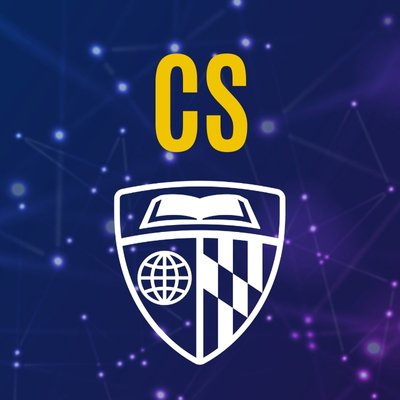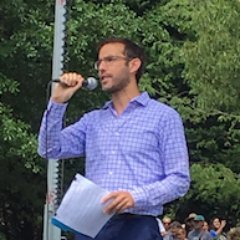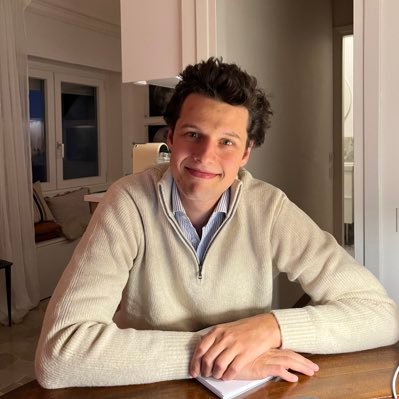
Uthsav Chitra
@uthsavc
Followers
1K
Following
36K
Media
36
Statuses
415
Assistant Professor of Computer Science, Johns Hopkins University @JHUCompSci @HopkinsDSAI working on computational genomics + ML
Baltimore, MD
Joined September 2018
New life update! 🎆 🎓 This Fall, I will be joining the Department of Computer Science at Johns Hopkins University (@JHUCompSci) as an Assistant Professor, with an affiliation at the new Data Science and AI Institute (@HopkinsDSAI).
37
28
649
an elegant and extremely efficient (method-of-moments) test for epistasis in human traits congrats Boyang, Ali et al!! super excited to see this work published 🙂
🧬 Do genetic variants interact in humans? For years, the answer was “probably, but we lacked solid statistical evidence.” We now bring one of the strongest pieces of evidence to date. Thrilled to share our latest work, FAME, now at Nature Genetics:
1
1
4
Using a new deep learning algorithm, researchers at @Princeton have designed an approach to map the cellular organization of tissues by modeling spatial patterns in molecular data. https://t.co/899N66Lmtr
1
1
2
The Department of Computer Science is pleased to welcome 9 new tenure-track faculty to its ranks this academic year! Featuring @anand_bhattad, @uthsavc, @zihyunchiu, @krisgligoric, @murat_kocaoglu_, @_ziyang_, @tizianopiccardi, @yaxingyao, & @zakynthinou: https://t.co/yPOQpGI3ua
1
15
86
TissueMosaic is a super cool method for contrastive ST analysis with lots of rigorous benchmarking -- congrats @SandeepKambham2 et al!!
TissueMosaic, our method to study how changes in tissue structure across conditions affect cell-intrinsic function, is now out @CellSystemsCP! https://t.co/ctFE33aFPP
0
0
5
#HopkinsDSAI welcomes 22 new faculty members, who join more than 150 DSAI faculty members across @JohnsHopkins in advancing the study of data science, machine learning, and #AI and translation to a range of critical and emerging fields. https://t.co/tAauSzRFWD
3
29
203
Should you take an SVD before or after integrating your data? Our new preprint derives some surprising insights using tools from Random Matrix Theory. With @PhillipNicol, @rafalab, and Rong Ma. https://t.co/X7x9nnxGa7 (1/n)
1
6
25
Presenting at #ISMBECCB2025 tomorrow! GASTON-Mix, a unified model of spatial gradients and domains in spatial 'omics data. 11:20am UK time at RegSys Also recruiting students for my new lab at @JHUCompSci, feel free to reach out if you want to chat
GASTON-Mix: a unified model of spatial gradients and domains using spatial mixture-of-experts https://t.co/N9DTRYq8ns
#biorxiv_bioinfo
1
8
26
Congrats to Ben Langmead on his promotion to full professor! 🎉 Prof. Langmead is recognized across the computational & life sciences fields for his innovative methods helping to transform how biomedical researchers and other life scientists access & use DNA sequencing data. 🧬
2
8
65
1/6 Excited to share our latest preprint: "MORPH Predicts the Single-Cell Outcome of Genetic Perturbations Across Conditions and Data Modalities". 🔗 https://t.co/4D82u5d6w0 🧵 👇 Here is what MORPH is in a nutshell!
2
16
113
Congrats to @gillianychu et al!!
The culmination of several PhD years — today LAML is published! LAML infers max likelihood time-resolved cell lineage trees from dynamic lineage tracing data accurately and efficiently. Thanks to @benjraphael for his guidance!
0
0
3
I am so deeply grateful for the support of many mentors and role models throughout the application process — there are too many to tag here, but thank you all 🙏 (Also grateful for the @HDSIUCSD Rising Stars in Data Science workshop which pushed me to apply this cycle!)
1
0
8
The Chitra Lab will build the next generation of machine learning and AI algorithms for addressing fundamental problems in biology. I am actively recruiting students — please visit our website for more details! https://t.co/8TK7BJcszt
2
2
20
Congrats Youn! and team, @lab_berger @HultgrenLab @broadinstitute @mit @GeorgKGerber1 @BrighamWomens @MGBResearchNews @harvardmed @AshleeMEarl
"Longitudinal profiling of low-abundance strains in microbiomes with ChronoStrain" - Kim et al. https://t.co/UXuuXKEodB
0
3
7
Excited to share our latest preprint, introducing the hierarchical cross-entropy (HCE) loss — a simple change that consistently improves performance in atlas-scale cell type annotation models. https://t.co/uX6paEG8k6
1
8
12















